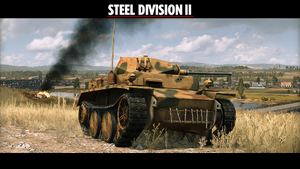
The ultimate Panzer II, Luchs, on a slope in the Soviet Union.
Panzer II was one of the principal German light tanks of the early World War II.
Background[ | ]
Sd.Kfz. 121 (VK 6.22 before adoption) was intended to be a stop-gap tank, to give Germany's fledgling panzer units proper fighting tanks immediately, due to delays in Panzer III and Panzer IV production. It was an evolution of the Panzer I, equipped with a 2 cm KwK 30 L/55 autocannon (KwK 38 in later versions) and a coaxial MG 34, light armor (later severely thickened due to the experiences of the Spanish Civil War), decent mobility and range. Though intended to be a stopgap model, it eventually became the principal light tank of the Reich for most of World War II, with production ceasing in 1943. Nearly 1 900 tanks were manufactured by that point, and the Panzer II together with its various conversions remained in service until the end of the war.
Models[ | ]
Ausf. C[ | ]
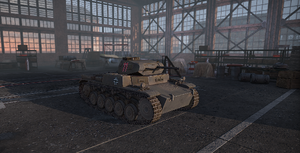
The most widespread production model of the Panzer II, Ausf. C was produced between June 1938 and April 1940, with a rounded hull front - typically upgraded with applique armor to increase survivability. It was used interchangeably with versions A and B, with a total of 1 113 vehicles manufactured between all three versions.
- Panzer II C: The basic version.
- Panzer II C Fuh.: A company commander's tank.
- Bef. Panzer II C: A battalion commander's tank.
Ausf. G[ | ]
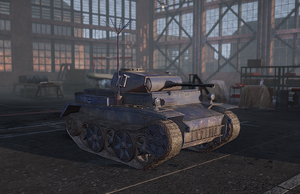
Panzer II Ausf. G was a prototype recon tank using a five overlapping road wheel configuration as suspension system.
- VK9.01: The experimental variant (Versuchskonstruktion).
Ausf. L. Luchs[ | ]
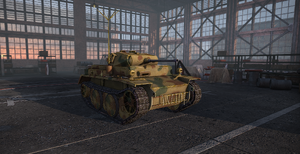
The L variant, named Luchs (Lynx), was an overhaul of the Panzer II created after production ceased. Envisaged as a recon vehicle, 100 Lynxes were created between September 1943 and January 1944. It was a powerful light reconnaissance tank, with a Schachtellaufwerk road wheel arrangement, a powerful engine allowing it to reach 60 km/h, solid armor for a light tank, and a 2 cm KwK 38 paired with a single 7.92mm MG 34 machine gun allowing it to engage targets in accordance with Germany's aggressive recon doctrine.
- Panzer II Luchs (SD2): The basic version.
Conversions[ | ]
Marder II[ | ]
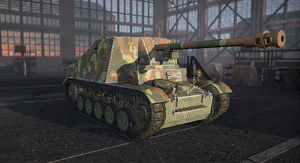
A practical solution to the problem of fighting Soviet tanks, the Marder II (Marten II) combined the reliable Panzer II chassis with a powerful anti-tank gun in a tall, casemate mounting. The early versions (Sd.Kfz. 132) were pressed into service rapidly in 1942, and mounted captured F-22 obr. 1936 field guns on Ausf. D and E chassis, providing much needed firepower against T-34 and KV-1 tanks. The second generation of Marders used the PaK 40 75mm gun on an Ausf. F chassis. This version, the Sd.Kfz. 131, was more thought out, shorter by 40 cm and with a more spacious interior. 202 early and 130 late model Marder IIs were manufactured between 1942 and 1943.
Wespe[ | ]
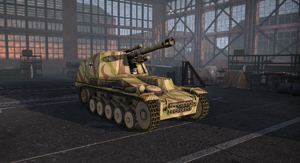
Intended to provide the standard 10.5 cm field howitzer (leFH 18M) with increased mobility, Leichte Feldhaubitze 18/2 auf Fahrgestell Panzerkampfwagen II (Sf.) or Wespe (Wasp) was a practical combination of the reliable Panzer II chassis unsuited for direct combat. Basing on the Ausf. F chassis, it entered service in 1943, immediately demonstrating its capabilities in the war with the Soviet Union, alongside its big brother, the Hummel. Production only ceased in 1944, with the arrival of the frontline at Warsaw and the evacuation of the occupied Ursus plant. By then, 676 Wespes were manufactured, with an additional 159 ammunition carriers.
